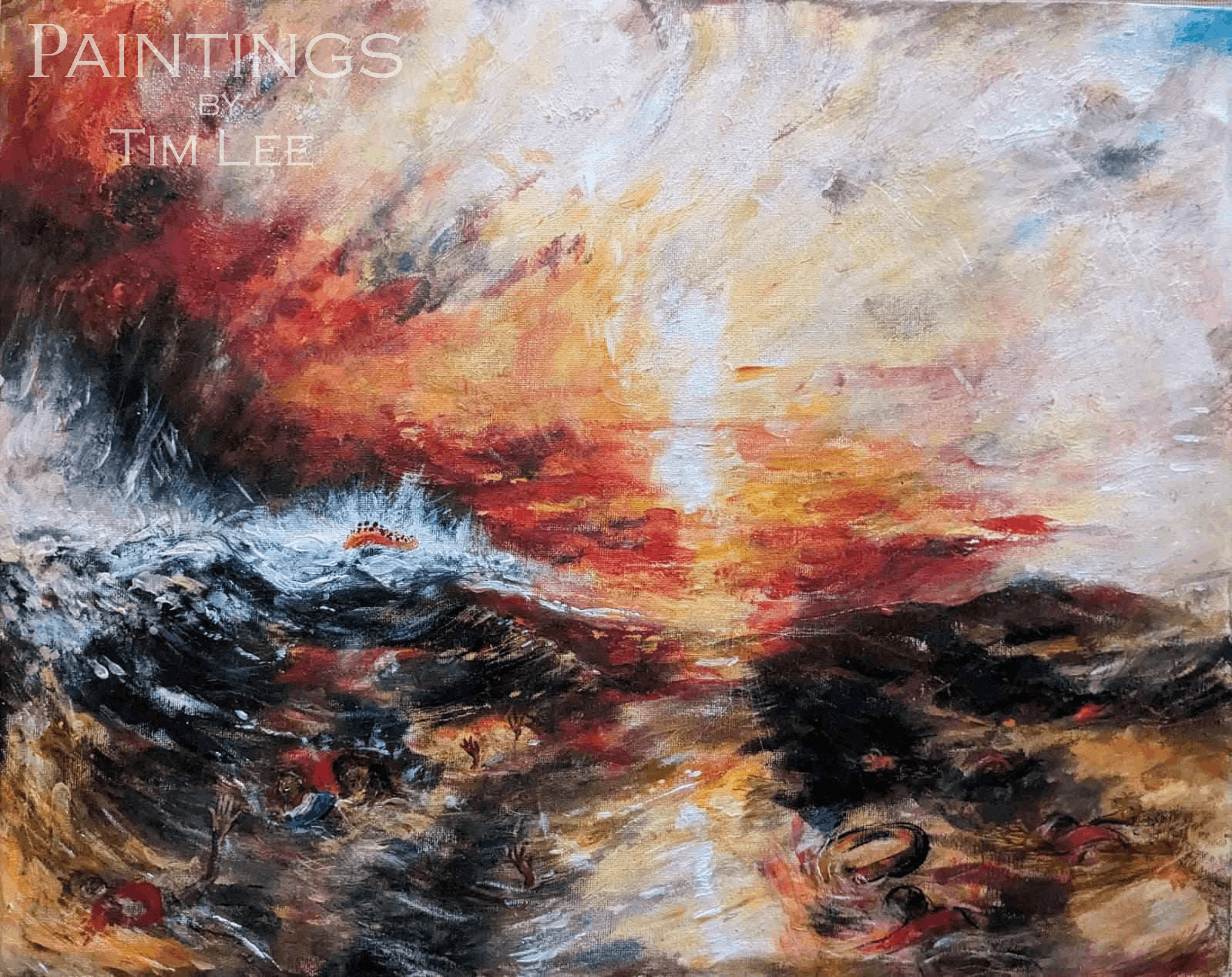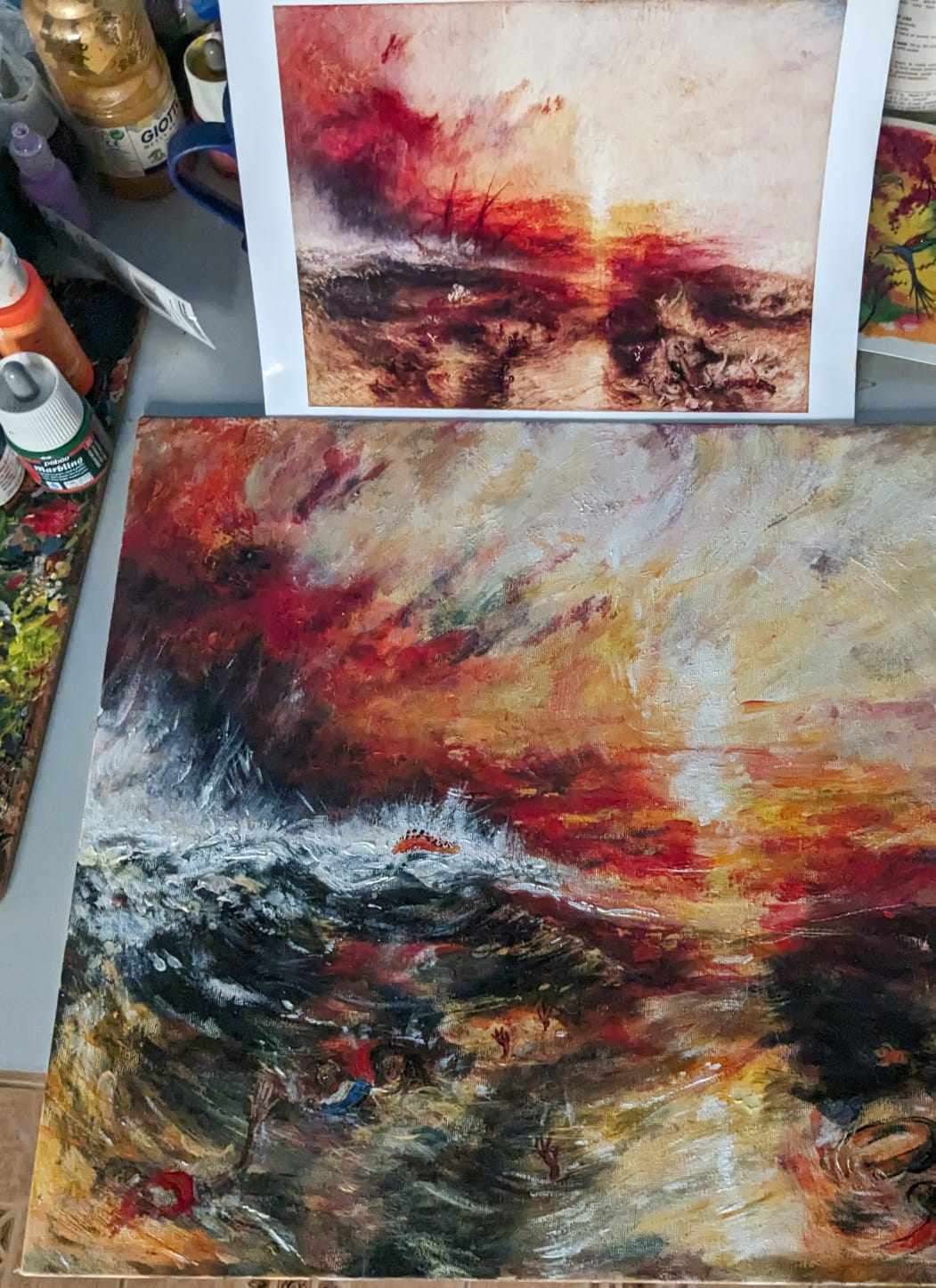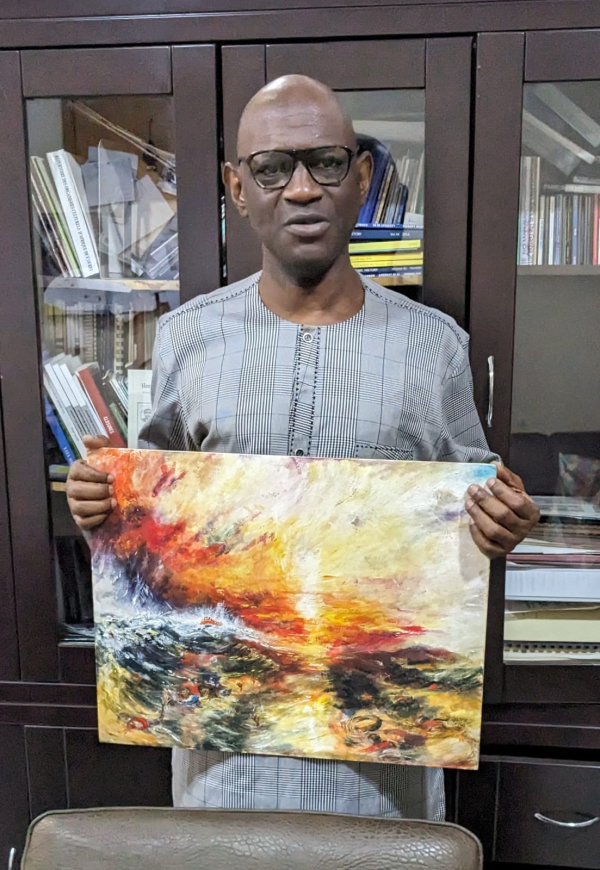
'Migrant Ship' painting & Newspaper articles
Artist speaks on epic painting illustrating African migrants dying on ‘backway’
Tim Lee worked with indigenous communities in Gambia, but always felt drawn back to issues concerning
African migrants who die in their numbers trying to reach Europe.
As migration continues to become a major issue in Africa and the world, artist Tim Lee started working
on a painting dubbed ‘Migrant Ship - despair of the dead and drowning’ that would illustrate how young
die on the Mediterranean Sea attempting to reach Europe.
The artwork, like a cascade of thousands of ribbons, straps and materials of different colours, depicts
the real stories migrants face on their journey to Europe.
Explaining the reason behind the adventure in a Standard exclusive, Tim Lee said: “It is based on JMW
Turner’s painting titled ‘Slavers throwing overboard the dead and dying’ which was first exhibited at
the Royal Academy Exhibition of 1840.”
Turner was an anti-slavery campaigner and abolitionist. Whilst Turner’s painting was heavily criticised
at the time it has since become one of his most famous works and has subsequently been titled ‘Slave
Ship’.
“In short, it struck me as to how similar the movements of migrants are now, to the movements of slaves
200 years ago, whether voluntary or involuntary.
As an annual visitor to The Gambia for the last 40 years I have met so many young people who have
attempted the ‘Backway’ journey, some have failed, some succeeded, some still suffering, some still
missing, it seemed that this was an appropriate way of conveying part of the reality facing those who
undertake the ‘Backway’ journey. Not that there aren’t equally horrific experiences almost every step of
the way before ever boarding on an inflatable boat,” he stated.
Just last year, Tim added, “I was on a small beach in Bakau when one of the drowned boys washed up on
the shore in front of my very eyes.”
Asked whether he thinks his painting will make a difference, “No, I doubt it very much. Perhaps it might
raise an eyebrow here and there, raise a few issues about a desperate situation, make a few people think
about it all. Who knows, perhaps a trafficker might even have a troubled conscience.”
On whether he does his painting in The Gambia, Tim said: “Yes, mostly, I started it before leaving but
finished it in Farato and Janjanbureh very near the old slaving post. It’s quite a small board canvas as
it had to fit inside my canvas suitcase. I would have entered it for the same exhibition that Turner
did, but the R.A. public exhibition became oversubscribed before the deadline and I wanted to paint it
here before the deadline. I wanted to paint it here in The Gambia. I will enter it for the Royal
Scottish Academy exhibition and see what happens.”
He thanked Fatou and Wassa Kassama who open their compound doors to him every year as part of their
family and allow him to sit painting for three months. “I really must mention ‘Perfect Stitches' in
Bundung who have made 700 school uniforms for me in connection with some Direct Aid Projects. And also,
to a young Gambian with whom I co-wrote an account of his heartbreaking tortuous ‘Backway’ journey,” he
said.




